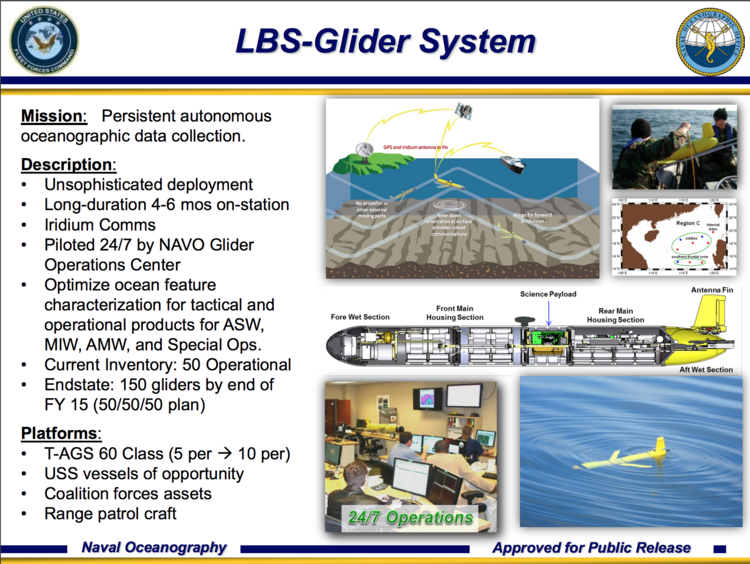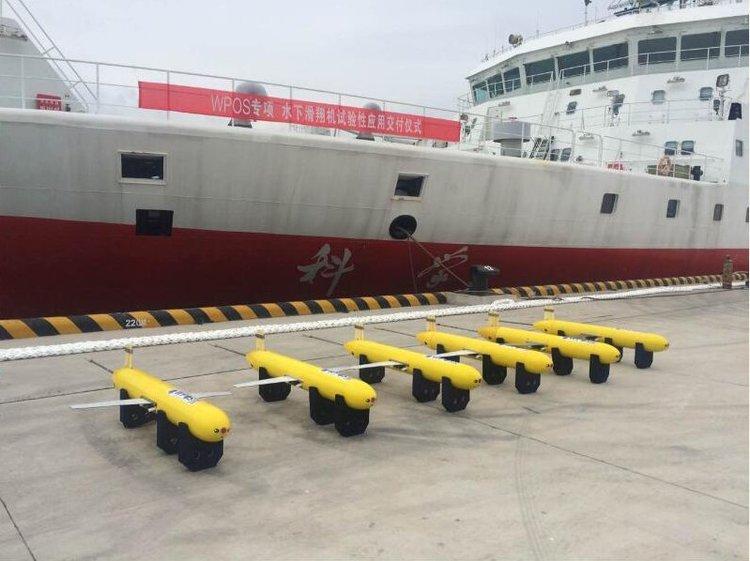Beginners Guide To Underwater Drones
:date: 2016-12-27 19:36
I was listening to NPR last week and they were talking about some story involving China taking possession of an American "underwater drone". Unfortunately, that wasn't the story. The story was actually Donald Trump's reaction (because even NPR can't stay focused on important things when prompted by an artiste of misdirection like Trump).
We should tell China that we don't want the drone they stole back.- let them keep it!
Hmm... I'm actually trying to ignore Trump Tweets, thanks. But this one stuck in my mind and finally it resurfaced in the form of conscious befuddlement. Wait... "Underwater drone"? What the heck is an underwater drone? I try to be aware of what forms of torture, genocide, and homicidal mayhem my neighbors are busy unleashing on the world, but underwater drone was a new one to me. I know about this airborne drone made by the San Diego company who created the supercomputer center where I work (originally for developing WMDs before it became part of the the university). I had also just watched Tomorrow Never Dies and in it James Bond fights with this underwater drone which can munch through ship hulls.

This fictional event takes place in the South China Sea for the purpose of manufacturing a provocation for war with China no less. Is that the kind of underwater drone we're talking about?
It finally occurred to me that that I did, in fact, know quite a bit about small unmanned watercraft. Some of my funding comes from the Scripps Institution of Oceanography where I help researchers collect, manage, and process data from thousands of free floating scientific measurement devices known as drifters. My colleagues there also do work with other kinds of small autonomous oceangoing craft. Could this be what the fuss was about? When I looked into it, I saw a photo that reminded me of something I'd seen in the SIO lab.
There is definitely some bad reporting of this whole story and details have been a bit fuzzy. Although I also saw photos of another kind of similar submersible, I now believe that is an error. I believe the unit making news is most likely a Teledyne Brown Engineering Littoral Battlespace Sensing-Glider (LBS-G) using a SLOCUM glider vehicle whose design is based on a project first researched at SIO.
This whole topic has many fascinating aspects and perhaps the most interesting is just how these underwater gliders work. Unlike the free floating drifters that I work with, a glider is steerable and has a means of propulsion. The very interesting part is the rather novel propulsion concept. Basically the units have a type of bladder that can be filled or emptied which can change the craft's density. In other words, they can be made to float or sink and that's pretty much it. The trick is that when they're sinking and rising, wings direct them forward. By alternating sinking and rising, very low energy operations, the unit can cover large horizontal distances and access some pretty deep water.
This very informative recent (2016-11-16) article includes this useful graphic with an inset map clearly depicting the South China Sea.

The third bullet point is of special interest to me because it turns out that the drifters I work with use the same Iridium satellite system to communicate back to us. Iridium makes it feasible to report thousands of samples from various sensors on each dive cycle for around a dollar which can result in quite a data intensive operation. Indeed, if you are interested in receiving and processing messages from this network, you might be interested in the Python module I wrote to do exactly that.
Check out my ISBD Python module: http://xed.ch/project/isbd
One obvious question related to the Trump tweet is how much do these things cost? It looks like these units are around $350k each but a lot of the contract I base that on surely involves engineering and support so losing a specific unit would probably be much cheaper. My SIO colleague says these units are commercially $150k and that SIO's version cost $50k. So we're not talking about the kind of cost associated with a $4 million MQ-1 Predator flying drone.
The next important question is what was this unit doing in the South China Sea? Maybe it was collecting oceanographic data for Navy purposes. They definitely like to know the conditions at sea, especially in strategically interesting places like the SCS.
Maybe it was trying to find subs. Or just testing that idea out. This (mostly) San Diego based military report features experimentation with submarine detection using both Slocum and Seaglider formats.
Was there reason for controversy?
Autonomous gliders aren't allowed to collect data inside any country's Exclusive Economic Zone without a "Memorandum of Understanding". Maritime law says the host country owns anything inside it's EEZ. The drifters my lab manages are exempt from this because they are covered by UNESCO and the World Meteorological Organization, which China is also a member of. Basically things can get complicated from a legal standpoint especially when the borders are disputed. We have a number of drifters in the South China Sea which are no secret since their data ultimately ends up in the public domain for anyone to use.
Who knows? Maybe the Chinese simply thought they had stumbled upon one of their own underwater gliders. The Chinese are famous for cheap imitations and underwater gliders don't seem immune. Here's a report about Tianjin University's Haiyan Petrel II HUG underwater glider. They certainly look similar.
All of that is interesting, but is there something even more interesting going on? Hopefully this is just obfuscatory bluster and, if so, let's hope it's not concealing anything too terrible. If it is straight up provocation it would not be the first time that an American war profiteer fomented conflict by fabricating an incident to justify intervention. Whether some chicanery is going on right now with misdirection or posturing or whatever, there may be an even deeper problem.
In the 1960s submarine launched ballistic missiles (SLBM) became the answer for how to assure a second-strike capability. Unlike vulnerable land missile silos and expensive bomber fleets, submarines are hard to find and thus assure a retaliatory strike will be possible. This has been such a solid strategy that the Soviets even began to randomly shuffle their land ICBMs on railway cars for the same reason. But imagine a world where a network of inexpensive autonomous sensing robots can make a submarine's chances of hiding less certain. If that were to happen, we'd be back to the even more terrible strategy of covering as much of the earth with as many nuclear missiles as possible. If you believe, like I do, that there is a non-zero probability that a catastrophic accident may occur in a nuclear weapon stockpile, then losing the advantages of a relatively lean submarine based deterrent multiples the odds of such a calamity.
And that my friends, is why we can't have nice things.
UPDATE 2025-02-20
If you like this kind of thing or annoyingly stumbled upon this while doing more serious research, here is an academic paper looking at whether autonomous submersible technology will help or expose strategic (nuclear) subs. The title is Undersea nuclear forces: Survivability of Chinese, Russian, and US SSBNS. They conclude "... it is more likely that new technologies can be effective in protecting SSBNs than threatening them over an extended time."
